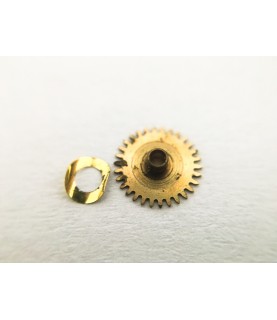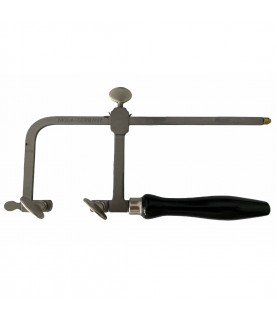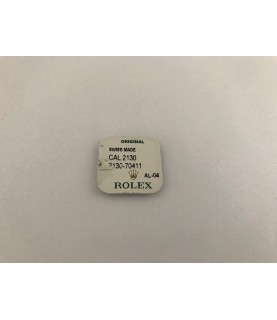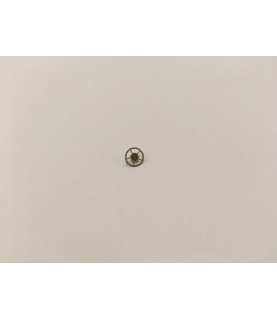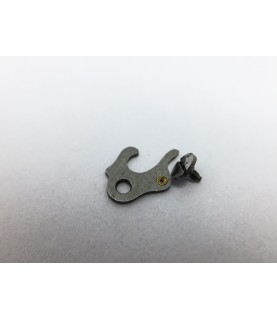Three Lanes in Each Direction
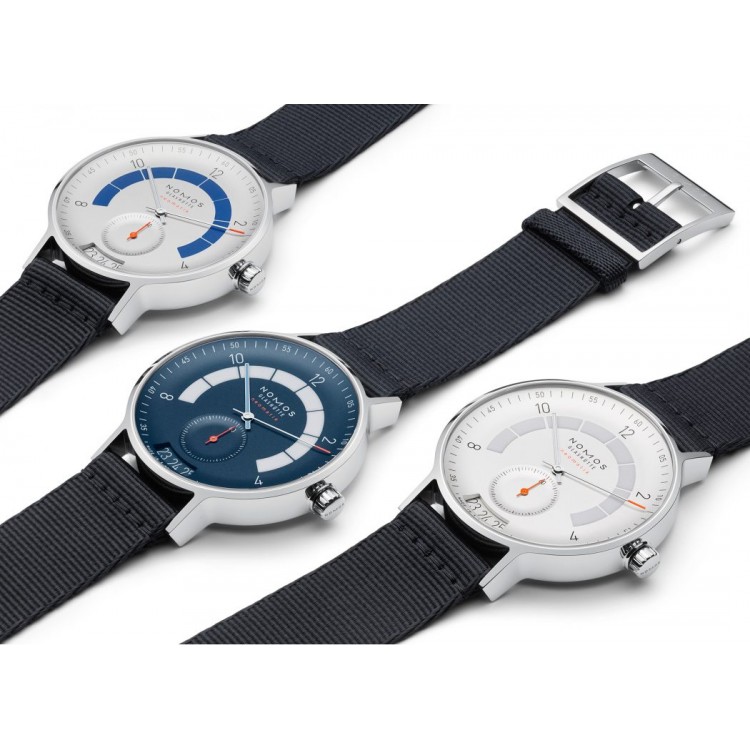
Inspired by the Nomos Autobahn's unusual name, we drove along its namesake, the German autobahn, to the city of Glashütte, where we tested the watch prior to its Baselworld debut. For Nomos Glashütte, "autobahn" means the finest German-made quality. It also refers to the exhilarating feeling of freedom you get when you cruise at high speed along the six-lane German autobahn superhighway behind the wheel of a well-engineered roadster. We traveled on the autobahn to meet with Nomos Glashütte's CEO Uwe Ahrendt, who personally showed us the brand's newest model, the Nomos Autobahn Neomatik 41 Date, at Nomos's headquarters in advance of its launch at Baselworld 2018. With a diameter of 41 mm, the Autobahn is comparatively large for a Nomos watch. And while it has a sporty masculine appearance, it's nonetheless subtle and elegant, like a streamlined speedster, and simply beautiful at first glance. The watch's successful good looks can be credited to more than four years of collaboration between Nomos and German product designer Werner Aisslinger. Aisslinger's work includes designs for Swiss furniture manufacturer Vitra, his LoftCube mobile living prefab pod home, and other products made for home, office, and public spaces. For Nomos, Aisslinger's fertile imagination dreamt of old cars and prompted him to design a wristwatch that alludes to classic automobiles but avoids cliches.

Eight arcs of a circle, which form a horseshoe of 240 degrees in the inner part of the dial, remind the viewer of the speedometer on a classic car's dashboard, although the allusion here is an abstraction rather than an adaptation. If you identify the slender needle on the dial as the seconds hand and assume that it's meant to symbolize speed, you'll be doubly mistaken. First, the slender baton is not the seconds hand, but the minutes hand, which is liable to fool you because its proportions are typical of a seconds hand. Second, the hour hand, not the minutes hand, is designed to sweep along the speedometer's arc. The hour hand is tuned exactly to the circular arc, by its length and by its color at night, when this hand and the eight arcs shine with a lovely blue glow. This is not just a design highlight but also a solution. Between 8 o'clock in the evening and 4 o'clock in the morning, you can read the time from this scale the same way you read the speed on your car's speedometer. And after 4 a.m., the sky begins to brighten so the glow is no longer needed. The orange tip of the minutes hand, which is about the same length as the hour numerals, extends all the way to the indexes along the dial's periphery, which slopes gently upward and recalls the banked curves on race tracks. This curvature, which might also remind you of the rim of a plate or the lip of a shallow bowl, repeats itself at 6 o'clock at the small seconds dial, where the three-dimensionality is even more prominent.

These curvatures seem to bend only slightly upward, but they are actually quite tall, which makes the dial correspondingly thick and massive. This can be seen along the edges of the elongated crescent of the date window, which curves like a grin, below the small seconds. The three numerals shown in this window reference the autobahn highway's three lanes in each direction. The dominance of this display is no accident. The dominance of this display is no accident. The development of new self-winding Caliber DUW 6101, which ticks under the Autobahn's pavement, revolves around this not-to-be-underestimated addition. Caliber DUW 6101 is Nomos's 11th in-house movement. It follows DUW 3001 from 2015 as Nomos's second caliber in its Neomatik series. The term "neomatik" stands for "new automatic" and is reserved for totally newly engineered Nomos movements. "DUW" is the acronym for "Deutsche Uhrenwerke" (German watch movements). It underscores Nomos Glashütte's manufacture competence and marks Nomos movements derived from calibers originally named after letters of the Greek aphabet. Although these have not been wholly re-engineered, they have been equipped with Nomos's new swing system. The immediately distinguishable difference lies in the architecture of the bridges, which are clearly visible through the sapphire window in the Autobahn's caseback.

Like the DUW 3001, and in contrast to previous movements, Caliber DUW 6101 has a three-quarter plate on the back that covers a majority of the mechanism. The self-winding cadrature is also concealed underneath this large plate. Only a few individual wheels are visible, as is the balance, which oscillates beneath a stable bridge rather than a cock. With a thermally blued Carl Haas hairspring and DUW fine adjustment, the balance is part of Nomos's swing system. Watchmakers at Nomos Glashütte adjust all movements in six positions, a fact that is engraved for the first time on the movement plate of Caliber DUW 6101. Another new feature is the slightly elevated and gilded engraving on the rotor of the phrase, "Nomos Glashütte Deutsche Uhrenwerke." The rotor winds the mainspring very efficiently in both its directions of rotation. When the rotor reverses direction, its turning angle (also known as "dead angle") is now just 10 percent. Scarcely any other self-winding rotor can boast such a narrow idle arc. For comparison, the dead angle in an ETA 2824 is 27 degrees. Like Caliber DUW 3001, the 6101 does without a ratchet. Like Caliber DUW 3001, the 6101 does without a ratchet. The function ordinarily performed by this component is dispatched by a cleverly designed double-wheel system.

But as mentioned earlier, the primary focus of innovation in Caliber DUW 6101 was the date display. This had long been a stumbling block for Nomos because the brand hadn't had a state-of-the-art rapid-reset mechanism for this indicator. This obstacle has now been cleared away. And nomos's developers weren't content to leave this job only half done. With a diameter of 35.2 mm, Caliber DUW 6101 is especially large, and its ample dimensions provided plenty of space along its periphery for a big and very legible date ring. The visible portion of the date's surface is 14.7-square mm in area, nearly three times larger than its counterparts in other calibers. The elongated arc of the date window is a question of taste: some connoisseurs will love it, others may not, but the fact remains that it's an integral part of the design. Nomos's engineers also wanted Caliber DUW 6101 to be slim. Their desire to minimize height prompted them to design a special switching wheel for the date display. Strictly speaking, this system consists of two wheels with program control and a pawl. Instead of a conventional 24-hour wheel that completes one rotation every 24 hours, a smaller wheel turns four times per day, but it propels the date disk only once every 24 hours via the second wheel and the pawl. The smaller wheel not only keeps the caliber nice and slim (3.6 mm), but also has quicker meshing times, which enable the new date display to switch four times faster than its predecessor.

The switching interval lasts only 30 minutes. This is also why the lockout periods (the intervals during which the date should not be manually reset) are relatively short: they begin and end about 45 minutes before and after midnight. But even if you forget this rule and manually turn the crown during the 90 minutes around the watching hour, you needn't worry about damaging the movement because it's protected by a slip clutch. If not before, then when you pull out and turn the slightly conical crown, you'll notice that the date display can be reset both forward and backward. The date-correction wheel is held firmly and positioned outside the flow of force when the date is not undergoing manual resetting. This is the difference in construction compared to a date display that can be reset in only one direction. Another challenge for Nomos was to redesign the entire winding subassembly to give the crown three positions rather than just two. The results are quite successful.

The knurled crown is not only very easy to grasp, it also springs precisely into its individual positions. The date display switches gently but securely. The hand can be set accurately and without the slightest wiggle or play, so the time can be set with to-the-second precision. Nomos prides itself on building watches that neither gain nor lose more than one minute per week, and our measurements on the timing machine confirmed this good performance. Unfortunately, our short stay in Glashütte didn't give us enough time to perform an empirical test of the watch's rate on the wrist. The sheer size of the Nomos Autobahn makes a strong impression. The woven textile strap might not be everyone's cup of tea, but it is sturdy and well sewn. Most importantly, it works well with Nomos's pin buckle to guarantee that this watch fits comfortably around the wrist. The ends of the strap fit between pairs of lugs that extend seamlessly from the completely high-gloss-polished case. Viewed from the side, this arrangement might make you think of an overpass across the autobahn. Charging a "toll" of $4,800, Nomos's Autobahn isn't a bargain, but it remains within the brand's usual price points. And as a designer watch with a manufacture caliber, the Autobahn occupies a segment where few other brands can stake a claim in this price range.

